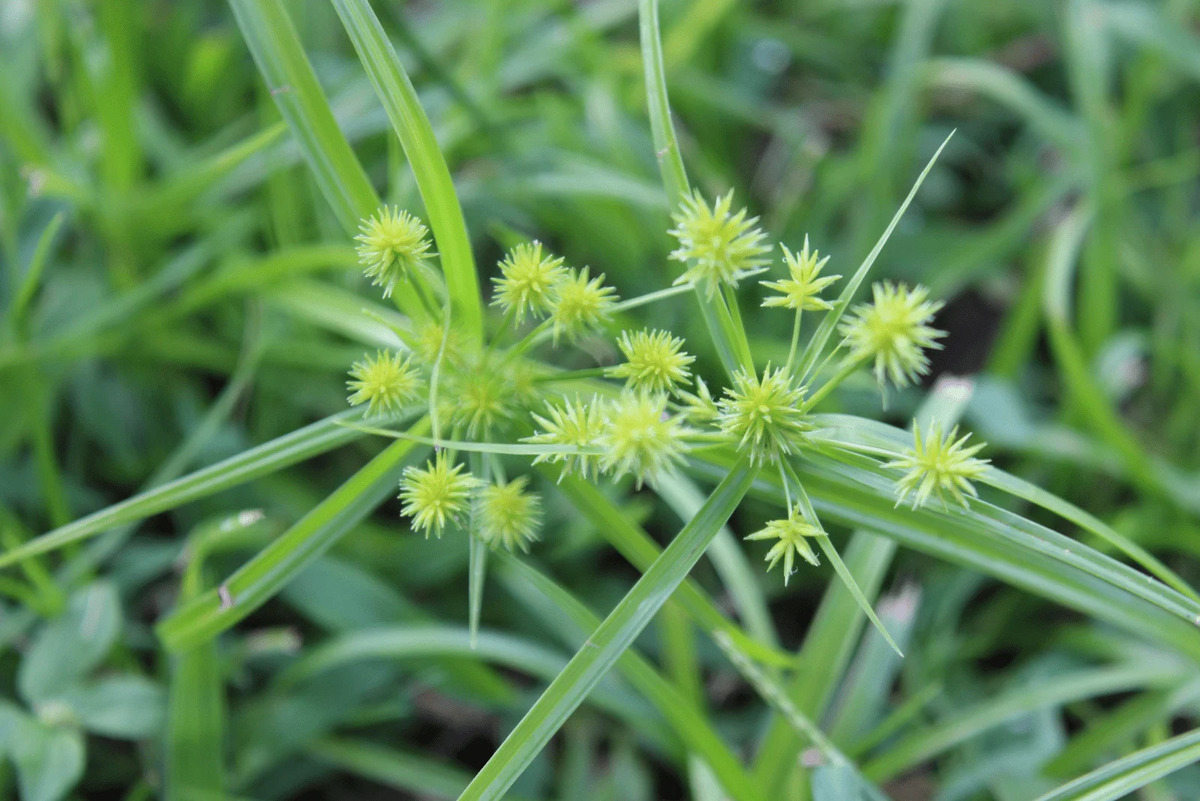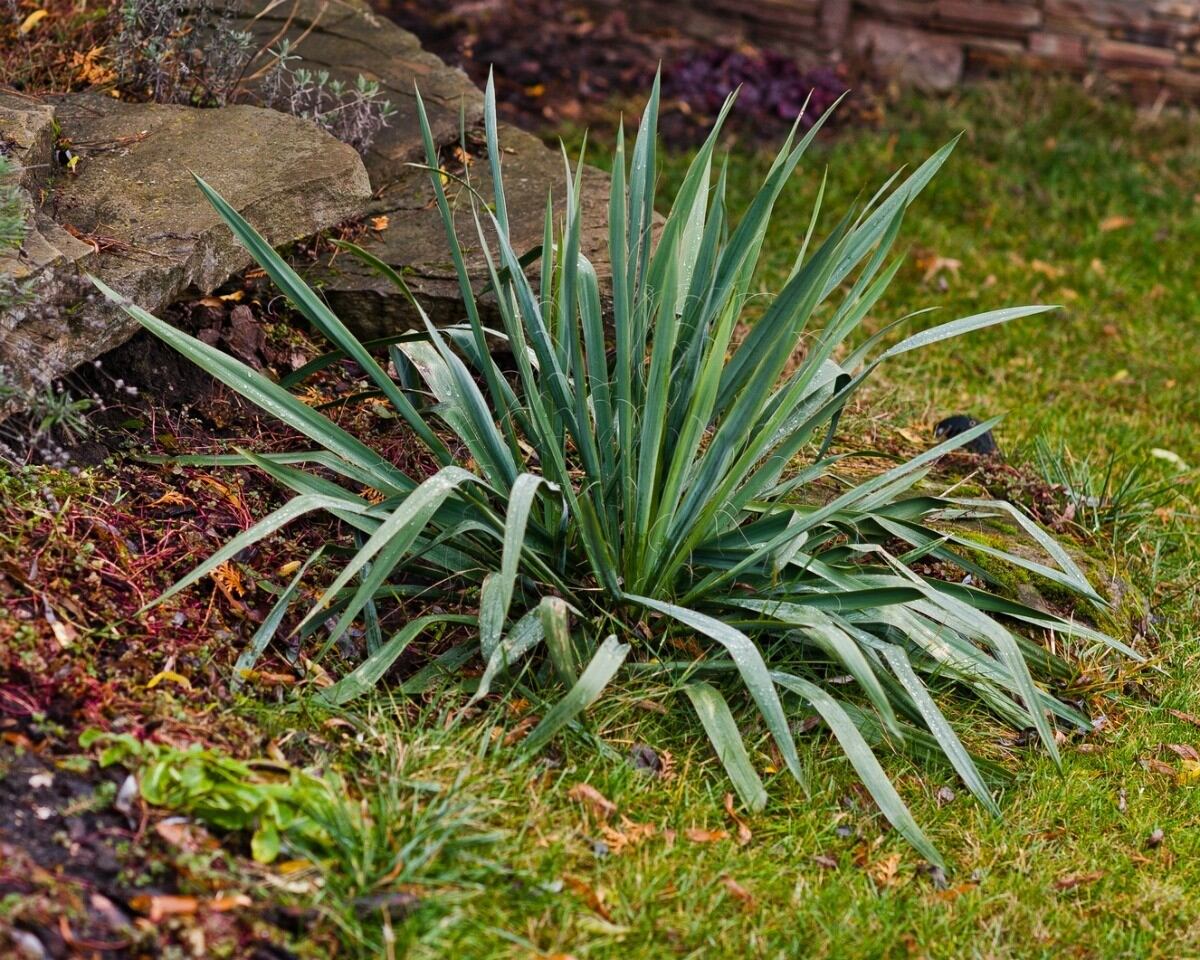Home>Gardening & Outdoor>Landscaping Ideas>How To Get Rid Of Powdery Mildew On Grass


Landscaping Ideas
How To Get Rid Of Powdery Mildew On Grass
Published: January 24, 2024
Learn effective landscaping ideas to eliminate powdery mildew on grass. Discover expert tips and techniques for a healthy, vibrant lawn.
(Many of the links in this article redirect to a specific reviewed product. Your purchase of these products through affiliate links helps to generate commission for Storables.com, at no extra cost. Learn more)
Introduction
Welcome to the ultimate guide on how to get rid of powdery mildew on grass. As a landscaping enthusiast, you understand the frustration that comes with discovering the unsightly white, powdery substance on your once-vibrant grass. Fortunately, with the right knowledge and proactive measures, you can effectively combat and prevent powdery mildew, restoring your lawn to its lush green glory.
In this comprehensive article, we will delve into the nuances of powdery mildew, exploring its causes, identifying its presence, and implementing both preventive and remedial strategies. Whether you’re a seasoned gardener or a novice homeowner, the insights shared here will empower you to tackle powdery mildew with confidence and expertise.
Join us as we embark on a journey to reclaim the health and beauty of your grass, banishing powdery mildew for good.
Key Takeaways:
- Combat powdery mildew on grass by optimizing air circulation, proper watering, and selecting resistant grass varieties. Embrace natural remedies and exercise caution with chemical control for a healthy, vibrant lawn.
- Identify powdery mildew early by recognizing white powdery residue, stunted growth, and yellowing. Implement preventive measures and cultural practices to fortify your grass against this fungal menace.
Read more: How To Get Rid Of Mildew Smell In Car Carpet
Understanding Powdery Mildew
Powdery mildew is a common fungal disease that affects a wide range of plants, including grasses. This pervasive nuisance is caused by various species of the Erysiphales fungi, which thrive in warm, dry, and humid conditions. When left unchecked, powdery mildew can rapidly spread across your lawn, diminishing its visual appeal and compromising its overall health.
The hallmark sign of powdery mildew is the powdery, white coating that develops on the surfaces of grass blades. This substance consists of fungal spores and mycelium, which are responsible for the infection and rapid proliferation of the disease. Unlike other types of fungal diseases, powdery mildew does not require water to germinate and spread, making it particularly challenging to control.
Understanding the environmental conditions conducive to powdery mildew is crucial for effective management. This fungal disease thrives in moderate temperatures ranging from 60°F to 80°F (15°C to 27°C), making it a prevalent issue during the spring and fall seasons. Additionally, poor air circulation, high humidity, and overcrowded grass can create an ideal breeding ground for powdery mildew, exacerbating its impact on your lawn.
As a discerning landscaper, recognizing the predisposing factors and characteristics of powdery mildew is essential for implementing targeted prevention and control measures. By gaining a deeper understanding of this fungal menace, you can proactively safeguard your grass against its detrimental effects.
Identifying Powdery Mildew on Grass
Recognizing the early signs of powdery mildew is pivotal in curbing its spread and minimizing its impact on your grass. When inspecting your lawn, be on the lookout for the following indicators of powdery mildew:
- White Powdery Residue: Powdery mildew manifests as a powdery, white coating on the surfaces of grass blades. This distinctive residue is a telltale sign of the fungal infection.
- Stunted Growth: Infected grass may exhibit stunted or distorted growth, with affected areas appearing less vibrant and robust compared to healthy sections of the lawn.
- Yellowing or Browning: As powdery mildew takes hold, the grass blades may display yellowing or browning, signaling the disease’s detrimental impact on their vitality.
- Thick Foliage: In advanced stages of infection, the grass may develop a dense, bushy appearance due to the accumulation of powdery mildew on the leaf surfaces.
Moreover, closely monitoring the environmental conditions in your lawn can provide valuable insights into the potential presence of powdery mildew. If your grass is situated in an area with limited air circulation and prolonged periods of high humidity, it becomes more susceptible to powdery mildew infestations.
By promptly identifying the signs of powdery mildew, you can take proactive measures to address the issue before it escalates. This keen awareness empowers you to intervene effectively, preserving the health and aesthetics of your grass.
Prevention and Cultural Control
Implementing preventive measures and cultural practices is paramount in mitigating the risk of powdery mildew infestations and fostering a resilient, disease-resistant lawn. By integrating the following strategies into your landscaping routine, you can fortify your grass against the perils of powdery mildew:
- Optimize Air Circulation: Ensure adequate spacing between grass plants to promote air circulation, reducing the likelihood of humidity buildup and fungal proliferation.
- Proper Watering: Water your lawn in the early morning to allow the grass blades to dry thoroughly throughout the day, minimizing the moisture levels that facilitate powdery mildew growth.
- Regular Mowing: Maintain an optimal mowing height for your grass species, as this promotes vigorous growth and helps prevent the onset of powdery mildew by reducing stress on the plants.
- Soil Health: Nourish your lawn with balanced fertilization and adequate organic matter to bolster the grass’s natural defenses and overall resilience.
- Select Resistant Varieties: When choosing grass species for your lawn, opt for varieties known for their resistance to powdery mildew, minimizing the susceptibility of your turf to fungal infections.
- Prune Overhanging Foliage: Trim back overhanging branches and foliage to enhance sunlight penetration and air circulation, creating an unfavorable environment for powdery mildew development.
By integrating these cultural control practices into your lawn care regimen, you can proactively diminish the conditions conducive to powdery mildew, fortifying your grass against potential outbreaks. Embracing a holistic approach to lawn maintenance empowers you to cultivate a vibrant, disease-resistant turf that thrives in the face of environmental challenges.
To get rid of powdery mildew on grass, try spraying a mixture of 1 tablespoon of baking soda, 1 teaspoon of dish soap, and 1 gallon of water onto the affected areas. Repeat every 7-14 days as needed.
Chemical Control
While cultural practices form the foundation of powdery mildew management, there are instances where chemical control measures may be warranted to combat severe infestations and prevent the disease from spreading. When considering chemical interventions, it’s essential to prioritize environmentally responsible products and adhere to safe application practices to safeguard both your lawn and the surrounding ecosystem.
Here are key considerations for implementing chemical control measures to manage powdery mildew on grass:
- Fungicides: Select fungicides specifically formulated for controlling powdery mildew on grass. These products are available in various formulations, including liquid concentrates and ready-to-use sprays, offering targeted protection against fungal pathogens.
- Application Timing: Apply fungicides at the first sign of powdery mildew infestation or during periods of high disease pressure to effectively suppress the fungal growth and prevent its spread.
- Follow Label Instructions: Adhere to the manufacturer’s instructions regarding application rates, frequency, and safety precautions to maximize the efficacy of the fungicide while minimizing potential risks to the environment and non-target organisms.
- Environmental Considerations: Exercise caution when applying fungicides to prevent runoff into water bodies and minimize exposure to beneficial insects, birds, and other wildlife in the vicinity of your lawn.
- Integrated Approach: Integrate chemical control measures with cultural practices and preventive strategies to create a comprehensive, integrated pest management (IPM) plan that addresses powdery mildew holistically.
When employing chemical control methods, it’s crucial to prioritize the long-term health and sustainability of your lawn ecosystem. By exercising prudence and selecting appropriate products, you can effectively manage powdery mildew while upholding environmental stewardship.
Ultimately, chemical control should be viewed as a supplementary tool in your arsenal, utilized judiciously and in conjunction with proactive cultural practices to achieve optimal powdery mildew management outcomes.
Read more: How To Get Mildew Off Patio Cushions
Natural Remedies for Powdery Mildew
Embracing natural remedies offers an eco-friendly and sustainable approach to combatting powdery mildew on grass, harnessing the power of botanical and organic solutions to restore your lawn’s health and vitality. These natural interventions not only target the fungal disease but also contribute to the overall well-being of your lawn ecosystem.
Consider incorporating the following natural remedies into your powdery mildew management strategy:
- Neem Oil: Derived from the seeds of the neem tree, neem oil serves as an effective botanical fungicide, disrupting the growth and reproduction of powdery mildew while exhibiting low toxicity to beneficial insects and mammals.
- Baking Soda Spray: A simple yet potent remedy, a baking soda spray can help suppress powdery mildew development. Mix 1 tablespoon of baking soda with a few drops of liquid soap in a gallon of water and apply the solution to affected areas of the grass.
- Milk Solution: Diluted milk solutions, when sprayed on grass susceptible to powdery mildew, can exhibit antifungal properties, inhibiting the spread of the disease and promoting the grass’s natural resilience.
- Sulfur Dust: Sulfur, a naturally occurring element, can be applied as a dust or spray to impede powdery mildew growth. It disrupts the fungal metabolism, hindering its ability to thrive on grass surfaces.
- Garlic and Onion Extracts: Extracts derived from garlic and onions contain natural compounds that exhibit antifungal properties, offering a botanical defense against powdery mildew infestations.
Integrating these natural remedies into your lawn care regimen provides an environmentally conscious approach to powdery mildew management, fostering a harmonious balance between effective disease control and ecological sustainability.
By harnessing the inherent properties of these natural substances, you can combat powdery mildew while minimizing the ecological impact of traditional chemical interventions, nurturing a thriving, resilient lawn through organic, nature-inspired solutions.
Conclusion
Congratulations on embarking on a journey to equip yourself with the knowledge and strategies to combat powdery mildew on your grass. By understanding the nuances of this fungal menace, identifying its early signs, and implementing preventive, natural, and, when necessary, chemical control measures, you are well-prepared to safeguard the health and beauty of your lawn.
Remember, prevention is key. By optimizing cultural practices, fostering a healthy lawn environment, and integrating natural remedies, you can proactively mitigate the risk of powdery mildew infestations, reducing the need for intensive interventions down the line.
Should the need arise for chemical control, exercise prudence and prioritize the long-term well-being of your lawn ecosystem. Select environmentally responsible products and adhere to safe application practices to effectively manage powdery mildew while upholding ecological stewardship.
Ultimately, your commitment to maintaining a vibrant, disease-resistant lawn sets the stage for a thriving outdoor space that you, your family, and your community can enjoy. By embracing a holistic and informed approach to powdery mildew management, you contribute to the preservation of a healthy, sustainable environment while reveling in the beauty of your lush, powdery mildew-free grass.
With your newfound expertise and proactive mindset, you are poised to conquer powdery mildew and cultivate a resilient, verdant lawn that stands as a testament to your dedication and horticultural prowess. Here’s to the flourishing, powdery mildew-free grass that awaits you!
Frequently Asked Questions about How To Get Rid Of Powdery Mildew On Grass
Was this page helpful?
At Storables.com, we guarantee accurate and reliable information. Our content, validated by Expert Board Contributors, is crafted following stringent Editorial Policies. We're committed to providing you with well-researched, expert-backed insights for all your informational needs.















0 thoughts on “How To Get Rid Of Powdery Mildew On Grass”